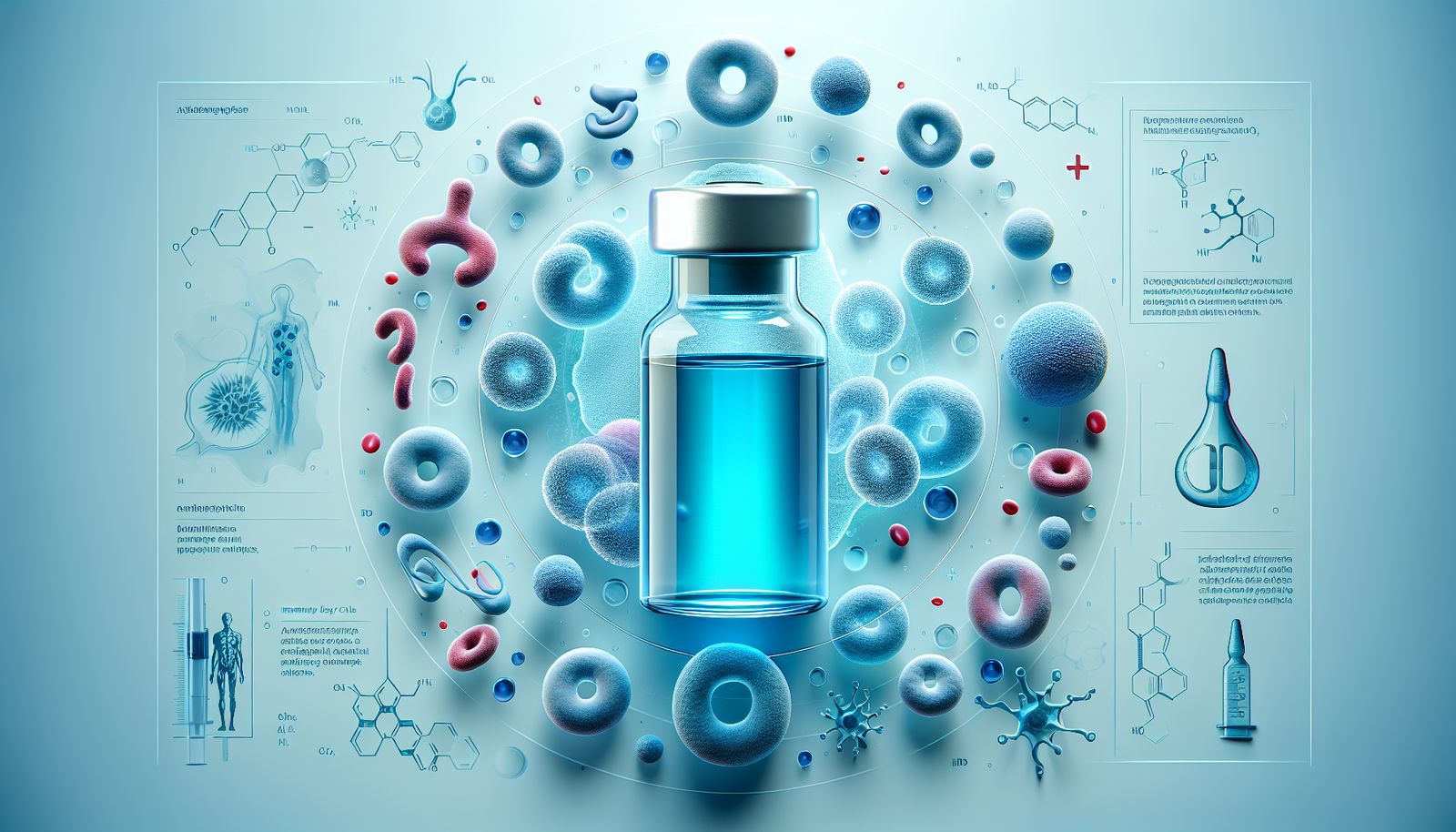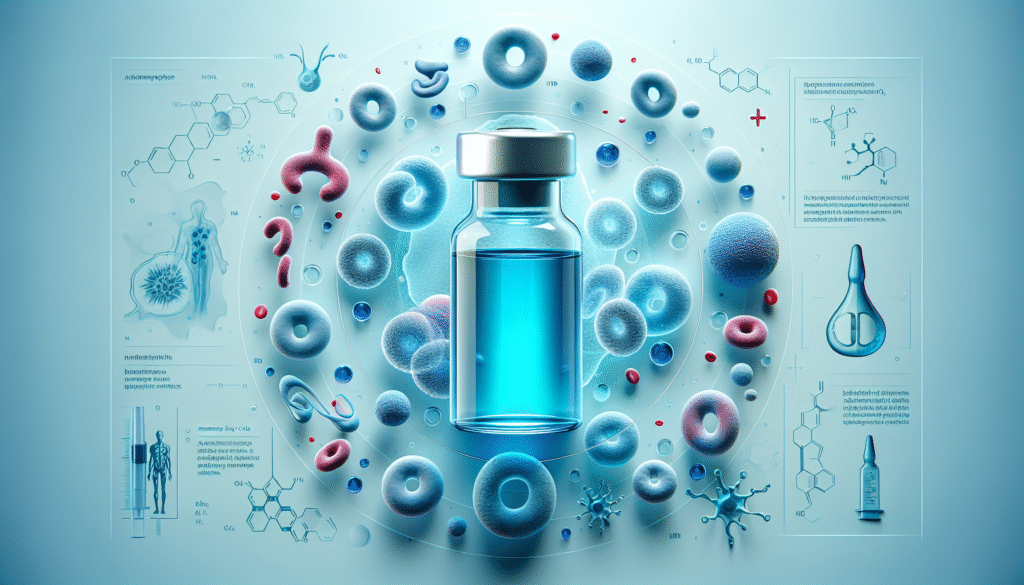
What if you could harness the power of a simple dye to bolster your immune system? This may sound like a stretch, but Methylene Blue, a compound with a long history, is currently under research for its potential role in immune function. This article aims to offer a comprehensive overview of Methylene Blue, exploring its history, mechanisms, applications, and implications for health.
Introduction to Methylene Blue
Methylene Blue is a synthetic dye discovered in the 19th century. Initially used as a textile dye, its medical applications emerged soon after. Today, it is recognized for its numerous biochemical roles, from acting as a redox agent to functioning as a photodynamic therapy agent in treating various diseases.
You might be curious about how a simple dye has findings linked to your health. The compound has captured the attention of researchers, particularly regarding its potential influences on the immune system. Understanding the properties of Methylene Blue could offer key insights into its role within the body.
The Chemical Structure of Methylene Blue
Understanding the chemical structure of Methylene Blue is crucial for appreciating its diverse functionalities. Methylene Blue (C16H18ClN3S) consists of a phenothiazine core with various substituents, contributing to its unique properties.
Structural Features
- Phenothiazine Ring: This central structure is responsible for Methylene Blue’s dyeing properties and reactivity.
- Methyl and Dimethyl Groups: These groups enhance its solubility and binding affinity, crucial for various biological applications.
This specific arrangement of atoms allows Methylene Blue to interact effectively with biological tissues, making it a candidate for diverse therapeutic functions.

Historical Context
The journey of Methylene Blue from a dye to a potential immune modulator is fascinating. In the late 1800s, it was first introduced as a textile dye, but its use quickly expanded into medicine.
Early Medical Uses
- Treatment of Malaria: Methylene Blue served as an antimalarial drug, indicating its biological activity.
- Methemoglobinemia Treatment: Its ability to convert methemoglobin back to hemoglobin demonstrated its action within the blood.
These initial uses provided a foundation for further investigations into Methylene Blue’s broader biological roles, paving the way for examining its immune-modulating effects.
Mechanisms of Action
To appreciate Methylene Blue’s potential role in immune function, it is necessary to understand how it exerts its effects at the cellular level.
Redox Activity
Methylene Blue operates as a redox agent, capable of transferring electrons in biological systems. This ability helps in:
- Cellular Respiration: It can facilitate mitochondrial electron transport, thus promoting energy production.
- Reduction of Oxidative Stress: By acting as a scavenger for free radicals, it protects cells from oxidative damage.
The redox activity of Methylene Blue suggests it could play a vital role in maintaining cellular health, including immune cells.
Anti-Inflammatory Properties
Emerging research indicates that Methylene Blue may possess anti-inflammatory properties that could be beneficial for immune function.
- Inhibition of Pro-Inflammatory Cytokines: Methylene Blue may suppress the production of cytokines like TNF-α and IL-6, which play crucial roles in mediating inflammation.
- Promoting Apoptosis in Inflammatory Cells: By selectively inducing cell death in activated immune cells, it could help regulate immune responses.
These mechanisms propose how Methylene Blue could serve as a modulator of inflammation, impacting overall immune responses.

Potential Applications in Immune Function
Understanding Methylene Blue’s mechanisms has led to its exploration for various therapeutic applications, particularly concerning immune health.
Infectious Diseases
Given its historical role as an antimalarial drug, current research is delving into Methylene Blue’s applicability in treating infectious diseases.
- Antiviral Properties: Some studies suggest Methylene Blue may inhibit viral replication, potentially offering defense against pathogens such as the flu virus and even HIV.
- Antibacterial Effects: Its antimicrobial properties may render it useful in treating bacterial infections, especially where traditional antibiotics falter.
These applications suggest Methylene Blue could enhance the immune response, helping the body fend off infections more effectively.
Autoimmune Disorders
The modulation of inflammation could make Methylene Blue a relevant candidate in managing autoimmune diseases.
- Regulating Immune Activation: By modulating cytokine production, Methylene Blue may help balance immune responses that are otherwise overly aggressive in autoimmune contexts.
- Reducing Chronic Inflammation: This could alleviate symptoms and progression in disorders like rheumatoid arthritis or lupus.
While more research is necessary, Methylene Blue’s properties provide an intriguing avenue for developing therapies targeting autoimmune dysfunctions.
Cancer Immunotherapy
Methylene Blue’s role in promoting oxidative stress in tumor cells makes it an area of active research in cancer treatment.
- Enhancing Immune Surveillance: By targeting cancer cells and promoting apoptosis, Methylene Blue may empower the immune system to identify and eliminate malignant cells effectively.
- Synergistic Potential with Existing Therapies: Combining Methylene Blue with conventional therapies could enhance the overall efficacy against cancer.
Such applications indicate how Methylene Blue could reshape therapeutic strategies in oncology.
Safety and Toxicology
When considering any compound for therapeutic use, it is essential to evaluate safety and potential side effects. Methylene Blue, while largely regarded as safe for medical applications, warrants careful review.
Common Side Effects
- Skin and Urine Discoloration: A known effect due to its dye properties, which might cause alarm but is generally harmless.
- Gastrointestinal Disturbances: Some individuals may experience nausea or abdominal discomfort when administered Methylene Blue.
Despite these effects, it is crucial to note that serious adverse reactions are rare when used appropriately.
Contraindications
People taking certain medications or those with specific health conditions should avoid Methylene Blue:
- Serotonin Syndrome Risk: Since Methylene Blue can affect serotonin levels, caution is essential for those on antidepressants.
- G6PD Deficiency: Individuals with this genetic condition face the risk of hemolytic anemia when exposed to Methylene Blue.
Understanding these contraindications is vital for safe application and effective patient management.
Conclusion
Methylene Blue represents a captivating convergence of history and modern science, embracing potential benefits in immune function and beyond. Its multifaceted nature—ranging from redox activity to anti-inflammatory capacities—positions it as a significant topic for ongoing research.
Your understanding of Methylene Blue may encourage you to consider its implications in your health practices. The prospect of utilizing a simple dye to enhance your immune system opens the door to innovative therapeutic approaches and novel insights in medicine.
As research continues to unfold, the role of Methylene Blue could evolve, offering new opportunities to address various health concerns, particularly those affecting the immune system. The dialogue around this compound reflects a broader trend in medicine toward re-evaluating established substances through the lens of contemporary science, ultimately striving for more integrated pathways to health.